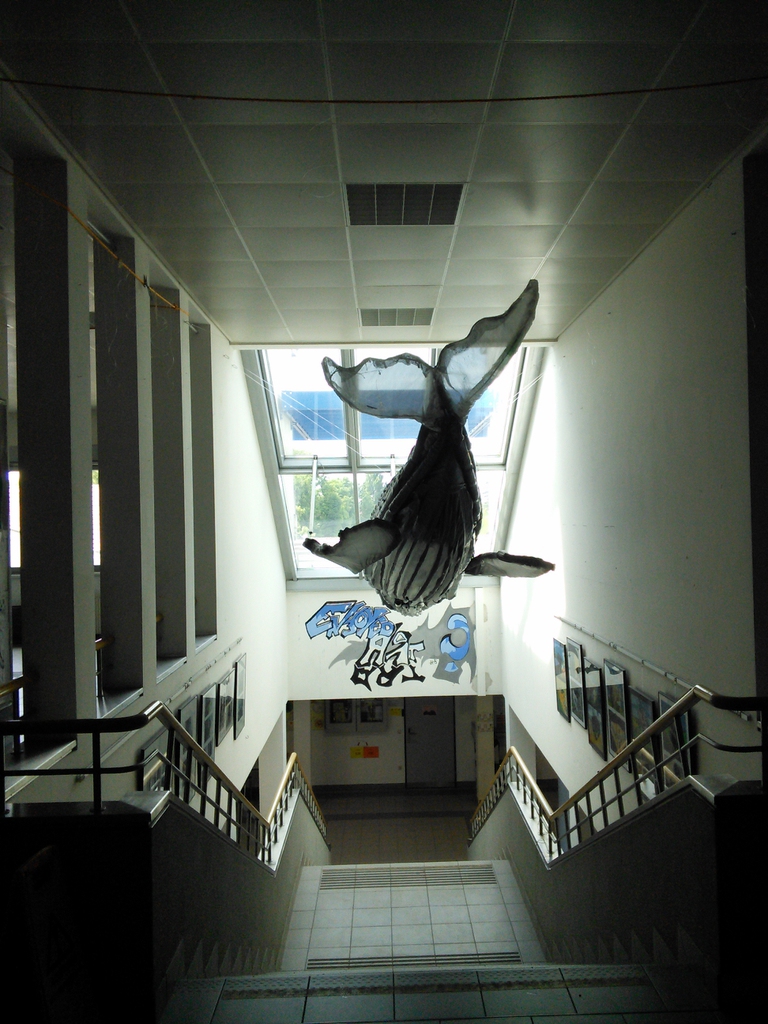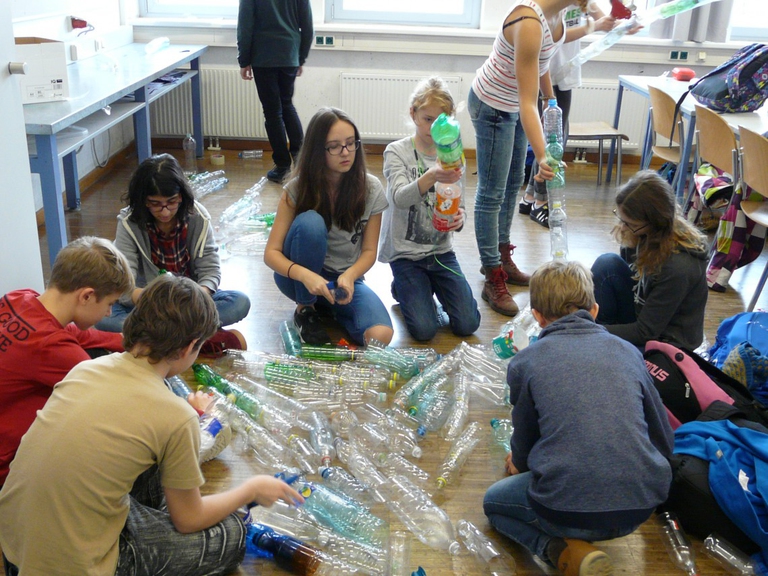
Sharon Lavigne, one of the six winners of the 2021 Goldman Environmental Prize, is fighting to protect her community from plastics corporations.
The first Children’s Clean Ocean Summit will take place at the UN’s Vienna headquarters. A platform for young people to speak their minds and draw up a declaration on saving oceans from plastic waste.
Children are humanity’s greatest heritage but their voices are seldom listened to. Instead, when they’re given the chance to shine they show true strength. One example is the Children’s Clean Ocean Summit, organised by the Kids Save Ocean non-profit and the United Nations, the first of its kind that asks children to work together to raise people’s and governments’ awareness on the issue of ocean pollution.
Read more: Ocean Array Cleanup, the first revolutionary system that removes ocean plastic is ready to set sail
It all started with a 5-metre-long plastic whale created by professor Peder Hill and the young students in his art class at the Draschestrasse bilingual school in Vienna, who were deeply touched by the theme of marine pollution, which they studied in detail with their teacher who comes from the US state of California. The children agreed to create something beautiful and symbolic using the very plastic waste that infests oceans.
Like Hill told his students, more than five billion pieces of plastic are found in our oceans. 269,000 tonnes are floating whilst sea depths are invaded with more than four billion plastic microplastic fibres for every square kilometre. This plague is affecting marine flora and fauna, and it is getting worse every day.
Last February the kids took part in another very symbolic initiative: a face painting event organised with the Austrian make-up school of Vienna. Their faces became a colour palette that represented the suffering of millions of sea creatures damaged by the tonnes of plastic and waste that pollute the ocean. Turtles, fish, penguins and ducks that are forced to swallow objects that appear to be food and who attempt to free themselves from the nets and threads that often bind them.
The gravity of this matter struck Hill’s students right away and after completing the plastic whale they felt the need to keep on working on this problem. This intuition led to a great idea: organising the first Children’s Clean Ocean Summit at the UN and naming it The Last Whale in honour of the whale from which it all started. The United Nations welcomed the idea and collaborated with the school to give the children a voice.
The date was set for the 22nd of June 2018 at the Vienna International Centre, the UN’s Austrian headquarters, where hundreds of children aged from 12 to 16 years from every corner of the world will meet to take part in different projects with a single objective: inspire global action to clean the oceans. In order to make this summit official a declaration on oceanic pollution will be drawn up, a list of priorities that will be sent to every government in the world.
Among the tools that are being created is the Fatechanger mobile app created by volunteer engineers from around the world to instruct children and teachers alike on the issue of oceanic pollution, as well as a means to contact institutions for information or to report problems. A sort of gateway to Kids Save Ocean’s main mission: “Our future plan is to become a dynamic non-profit platform to give children a powerful voice both now and forever”.
The large plastic whale created by the students will be installed at the venue in Vienna and will be then moved to the largest aquarium in Austria, Haus des Meeres. Small and large initiatives that move in the same direction: educating and raising children’s awareness, giving them a chance to have a powerful enough voice to convey their message to adults, and combat the indifference and passivity of the Earth’s most powerful.
Siamo anche su WhatsApp. Segui il canale ufficiale LifeGate per restare aggiornata, aggiornato sulle ultime notizie e sulle nostre attività.
![]()
Quest'opera è distribuita con Licenza Creative Commons Attribuzione - Non commerciale - Non opere derivate 4.0 Internazionale.
Sharon Lavigne, one of the six winners of the 2021 Goldman Environmental Prize, is fighting to protect her community from plastics corporations.
Plastic pollution is airborne too. Microplastics are being carried across continents by the wind, as a recent study reveals.
A group of experts in Tokyo suggested pouring radioactive water from Fukushima into the open sea. A marine biochemist explains the consequences of this absurd decision.
Levels of particulates in New Delhi in 2020 were once again far above safety thresholds, with extremely serious health consequences for its citizens.
The decline in grey and humpback whales in the Pacific and Atlantic Oceans has been traced to food shortages caused by rising ocean temperatures.
The United Nations has launched a major international alliance for ocean science, undertaking a mission close to all our hearts.
A major oil spill in the Ecuadorian Amazon in April has left the Coca River polluted. The indigenous Kichwa are suing the companies whose pipelines broke.
Molecules that eat up plastic waste, including PET bottles, may soon become widely used as scientists leap ahead in developing new super enzymes.
In Italy’s Land of Fires between Naples and Caserta, activists like Carmen Medaglia are fighting to promote new ways of managing waste.











